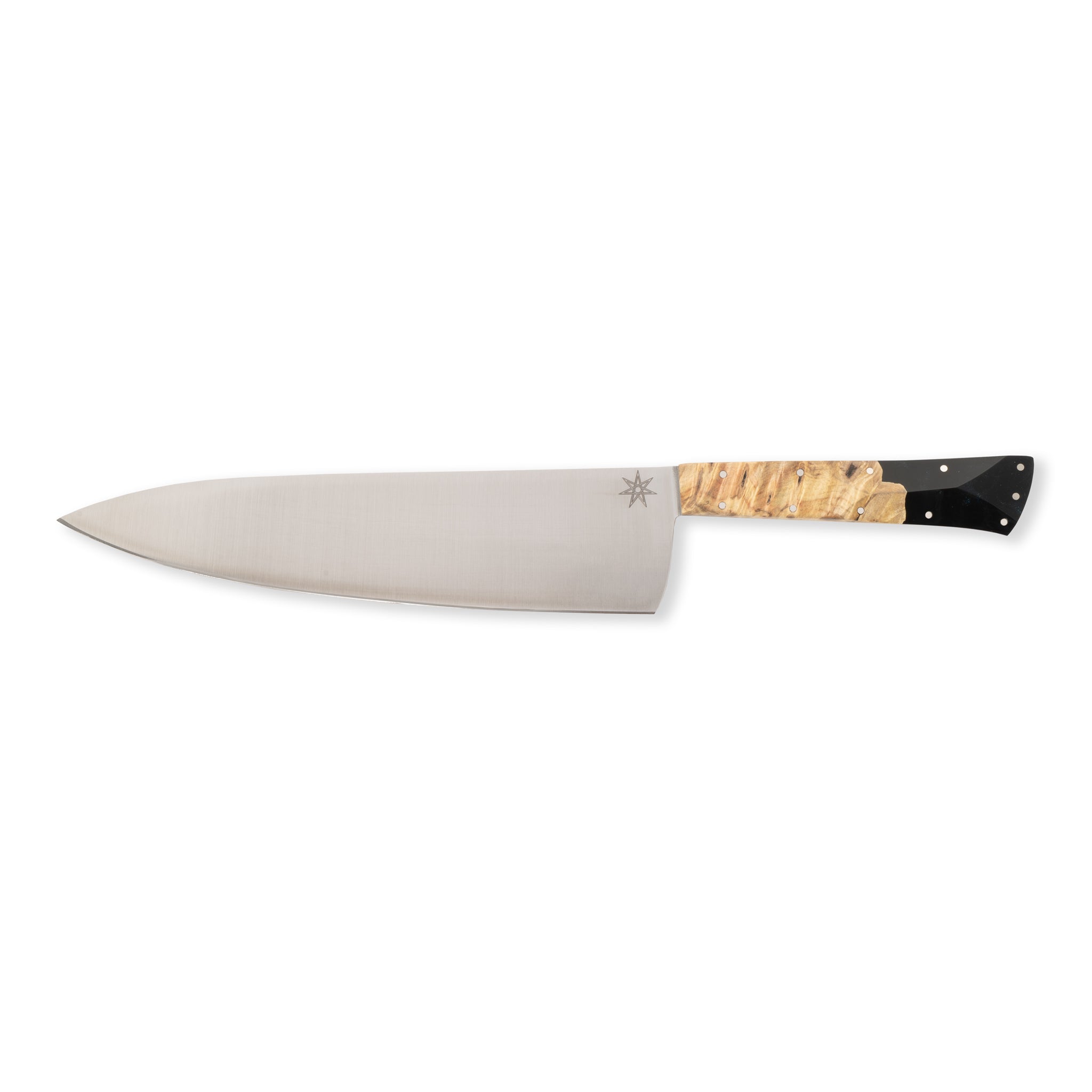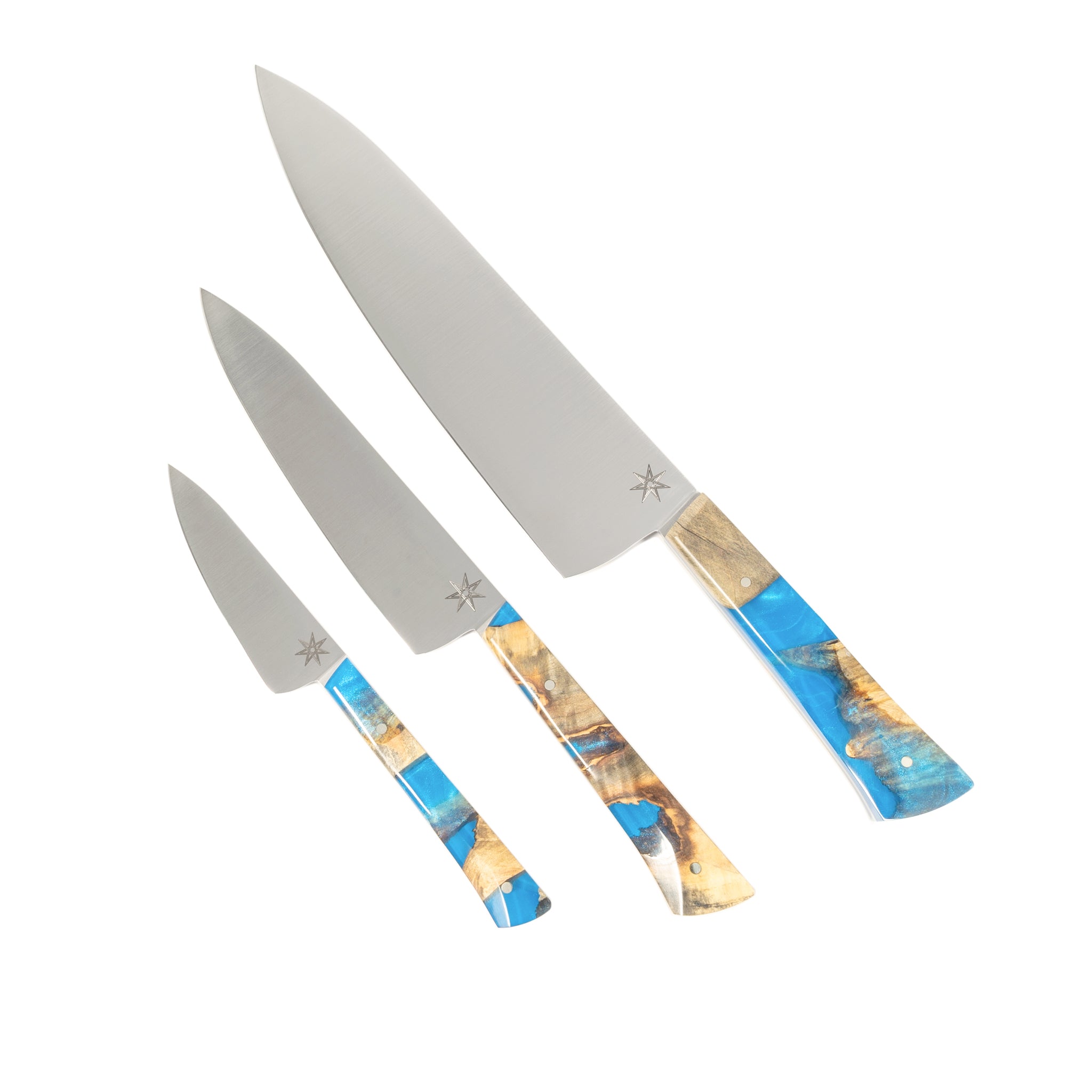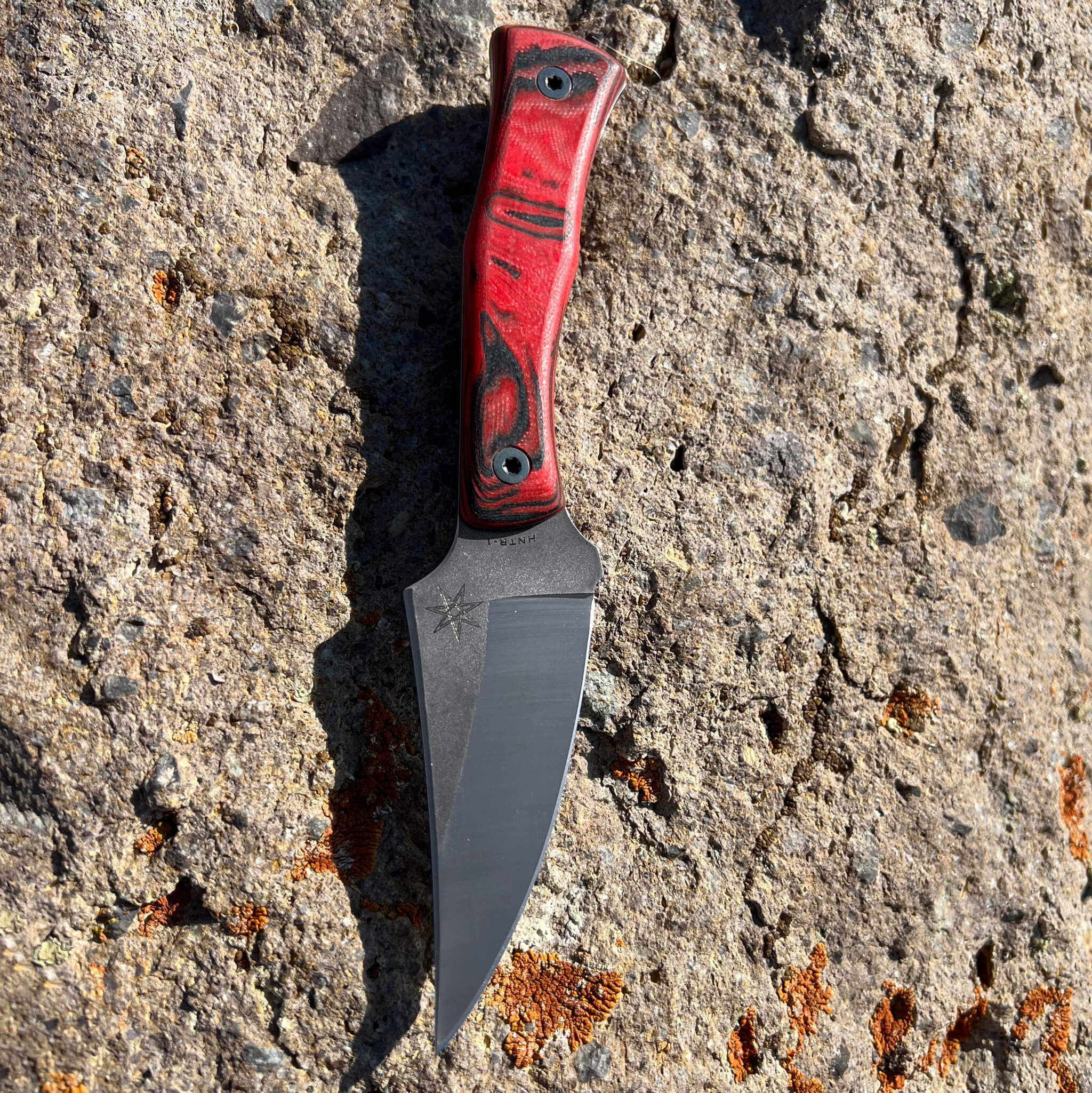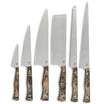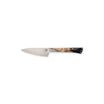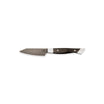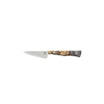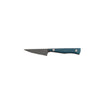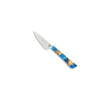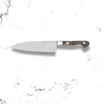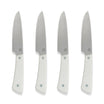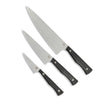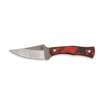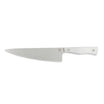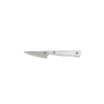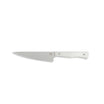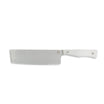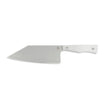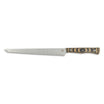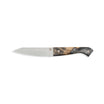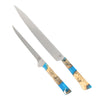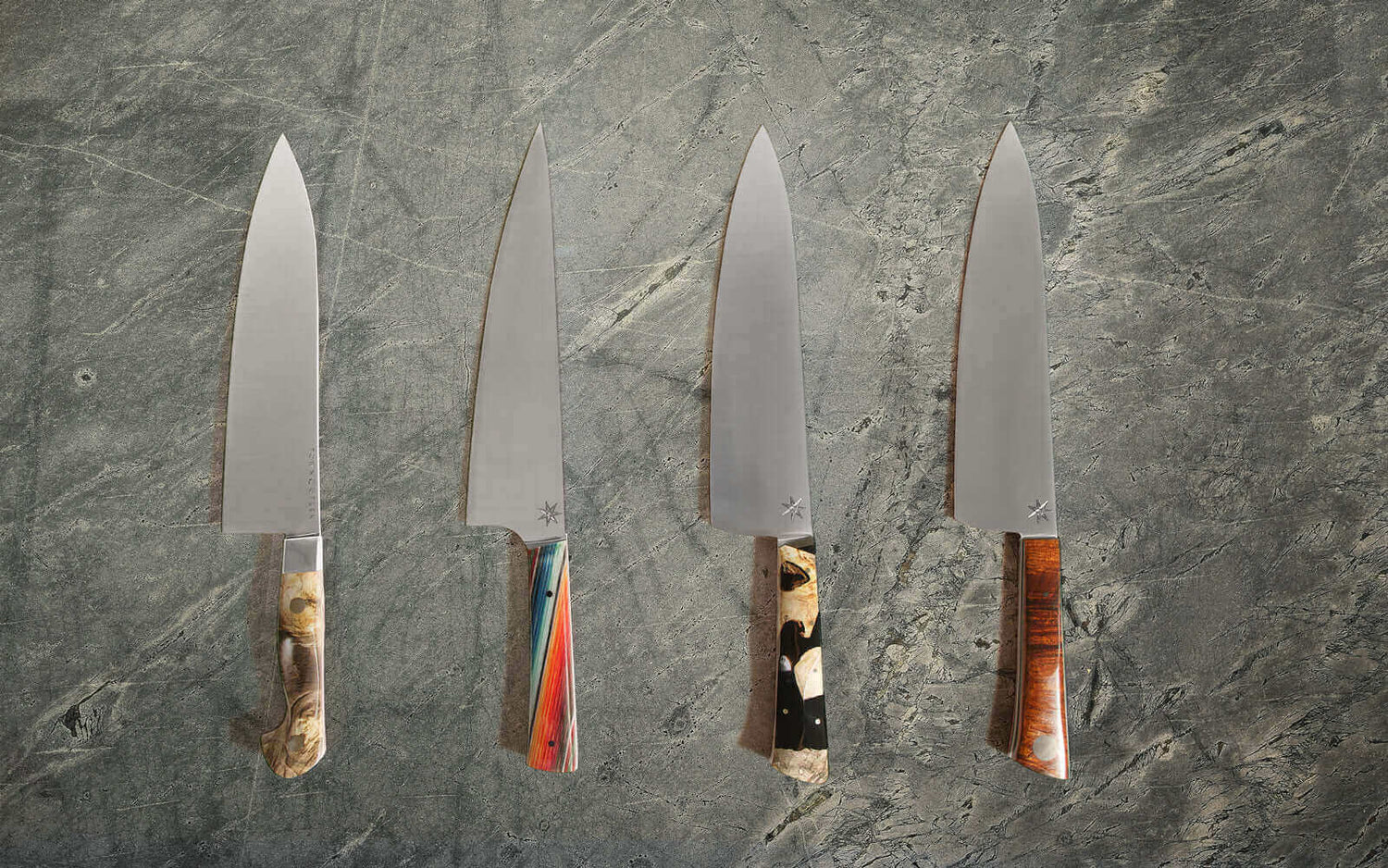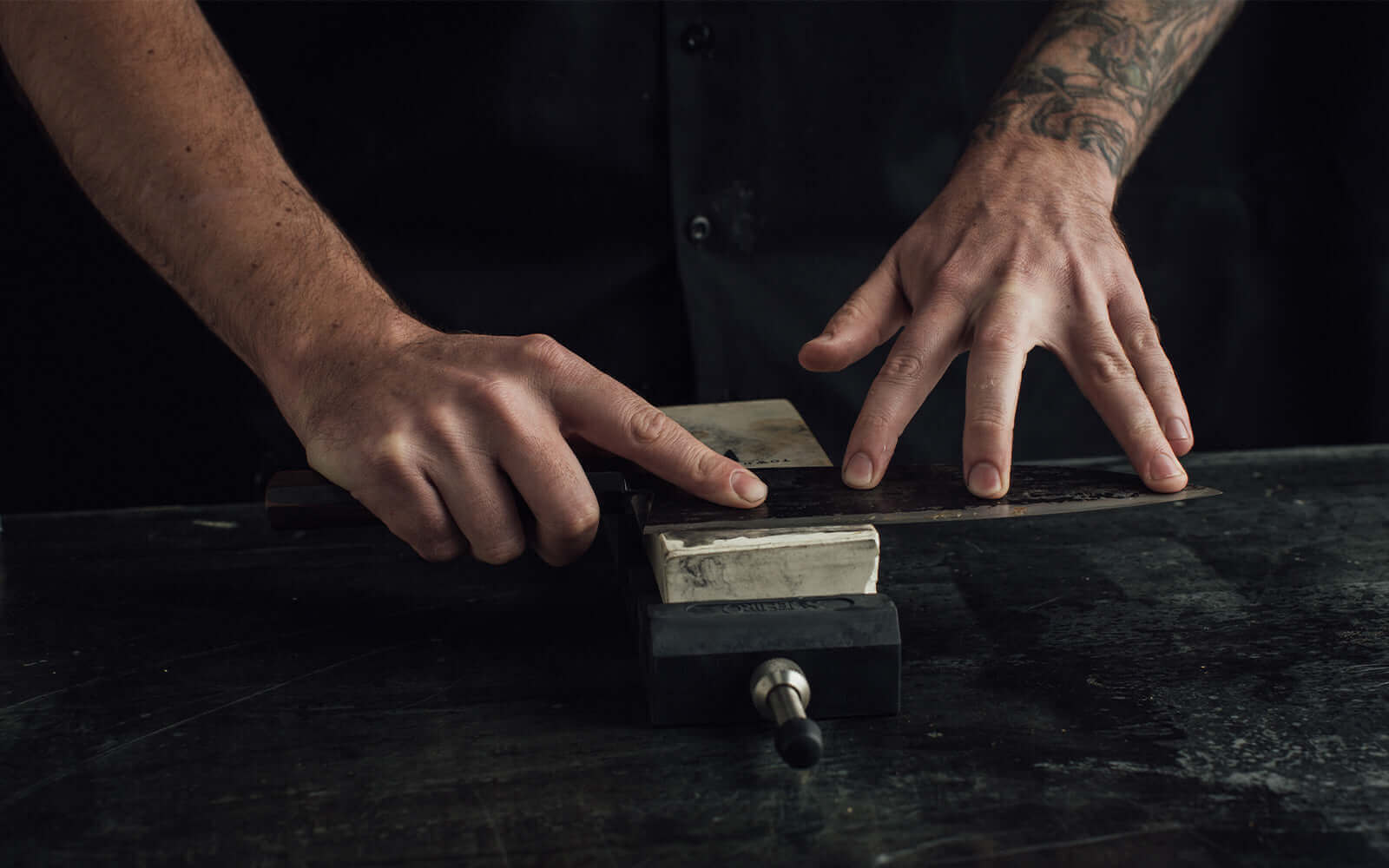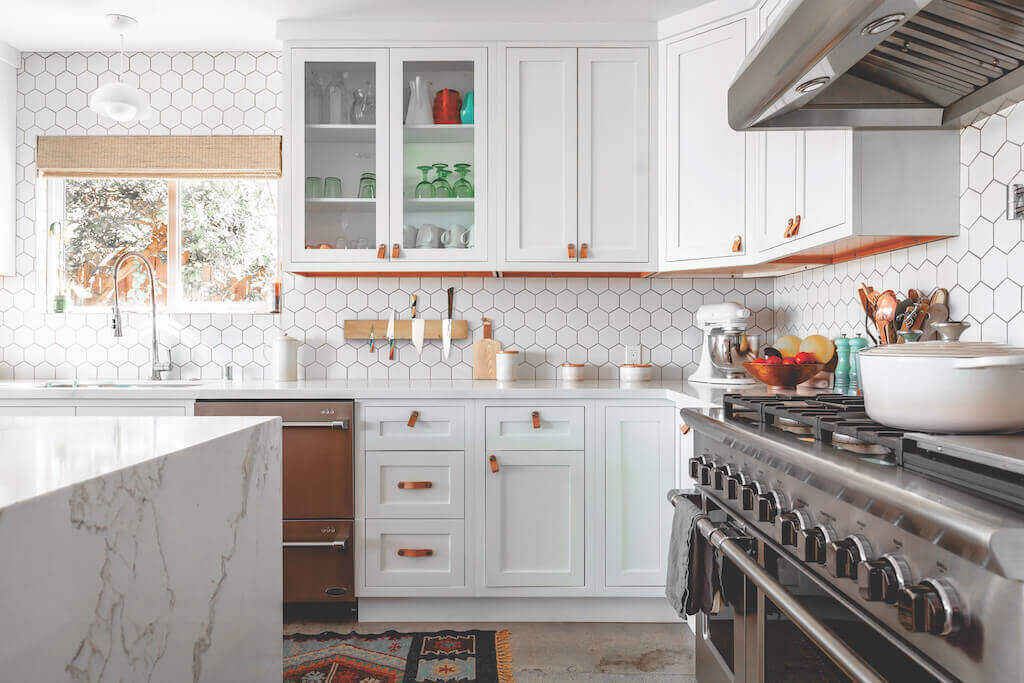Chef Knives: The Ultimate Kitchen Essential
Whether in a professional or home kitchen, chef knives can handle most of the tasks you'll come across without ever leaving your hand. This versatility is why they are often referred to as "the workhorse" of the kitchen; they can reliably get almost any job done. If you are looking to invest in quality kitchen cutlery, the best knife to start with is a chef knife.

Chef Knife Parts and Their Uses
Blade edge
The thinness, curve, and sharpness allow for a variety of uses and cutting techniques. Mincing, slicing, dicing, chopping, boning, and more; your chef knife is often all you will need to prepare a meal.
The blade's curve lets you rock from heel to tip, making quick and controlled cuts. The length lets you slice large cuts of meat or vegetables with a push-pull movement, while the thinness helps move the blade through effortlessly.
Tip
Small and sharp enough for detail work, a chef knife tip lets you easily trim or score meat, remove sinew and tendon, and separate soft joints; score, vent, or cut pastry dough; finely mince garlic and shallots.
Heel
This is the tallest part of the blade where you can get the most control and leverage. Use it to chop denser items such as yams, carrots, persimmons, or almonds.
Spine
The thickest part of the entire blade, often flat or slightly rounded, where you can apply more pressure with your other hand when needed. We refined our knife spines with rounded or chamfered edges; making them more comfortable when used to apply pressure.
Face
The flat side of the knife blade, where you measure blade height from edge to spine. Crush garlic, cardamom, cucumber, etc. If you use it to transport food from your cutting board, be careful not to apply too much pressure when doing so, as it could damage the edge of your knife.
What to Look For in a Quality Chef Knife
Tang
There are fans on both sides of the full or partial tang debate. The tang is the part of the blade steel that goes into the handle. Full tang means that the steel runs the entire length of the knife, creating a stronger and more balanced knife. Partial or half tang means the steel stops somewhere within the handle. Less steel means a lighter knife, if that’s your preference, but at the risk of the handle snapping where the steel inside ends.
Carbon or Stainless Steel
Whether you choose carbon steel or stainless steel is a matter of personal preference and how much you are willing to invest in maintaining your knives. Many people like carbon blades for the aesthetic of the patina that forms with proper care. To achieve the patina, they need to be oiled after every wash to keep the blade from rusting until the patina is formed. Stainless steel doesn’t form a patina, but doesn’t require any extra maintenance other than wash, dry, and keep sharpened. Read more about the differences, which kind of steel might be best for you, and how to maintain your knives properly.
For our blades, we primarily use ultra-thin Nitro-V stainless steel that is cryogenically hardened to 62 HRC and sharpened to a super-fine edge. HRC is the Rockwell Hardness scale (Hardness Rockwell C. The C is the category for steel in this scale) and measures the steel’s resistance to pressure distortion. Kitchen knives start at about 53 HRC, with French and German chef knives commonly measuring in the mid-to-high 50s HRC. Japanese chef knives typically measure 60 and above. Our chef knives have an HRC of 62, which lets them remain sharp for a much longer time.The higher the HRC, the harder the steel, meaning it has the ability to achieve a sharper edge and hold it longer.
We also occasionally do limited run carbon steel knives when we get the chance, so be sure to sign up for our newsletter to be notified of our next run.
Handle designs

Because of how much you will use your chef knife, make sure the grip is comfortable. Will it still be comfortable after a long day in the kitchen? Each of our knife collections has its own handle shape and design. If you prefer slimmer handle types, see our Baja and Olneya lines. For fuller, contoured handle designs, see our Classic and Desert Dawn lines. Our Classic handles are designed with a hook at the end to help keep your knife from slipping out of your hand, especially during messier projects.
If you are looking to upgrade your lackluster plastic handles for a chef knife with a wood handle, we have options. If live-edge Buckeye Burl is your style, both our Classic and Desert Dawn lines are what you want. The Olneya line is made from Desert Ironwood and each knife even has an ironwood branch laser-engraved into one side of the blade.
Our Baja line uses a unique micarta material for the handle called Mexican Blanket Especial. It is a synthetic composite of fibers and fabrics that doesn’t lose its color, age, or change over time. It is our most durable handle material.
Size matters
What size is right for you, your needs, and your work space? When deciding which size knife to buy, the blade edge, from heel to tip, is how blade length is measured. If you are in a tight space, you may not want or need a 10 inch chef knife. If you are constantly working with large items, a 7 inch chef knife might not be enough. Our 8.5 inch chef knife seems to be an ideal length as it is our most popular size for both professional chefs and home cooks.
Is a heavy chef knife better?
The weight of any kitchen knife is another matter of preference. For everyday practicality, a heavier knife only helps in certain instances, uses, or styles of cooking. What’s more important regarding weight is if you can safely and accurately use your chef knife with prolonged use. The balance and sharpness have more of an impact than the overall weight of the knife.
How to Care for and Clean a Chef Knife
Never put your knife in the dishwasher
Between the prolonged intense heat, harsh dishwasher detergent, and potentially getting blasted into other utensils or parts of the dishwasher from the water jets, the likelihood of damaging the steel, handle material, and the edge of the blade is very high.
Do not soak your knives
It takes less than a minute to hand wash your knife, dry it, and put it away. If you’re concerned about something drying on it before you can clean it up, simply rinse it and set it aside until you are able to properly wash it. A quick rinse between cutting different products can also help minimize things drying on the blade before you wash your knife. Especially when going from an acid, like tomatoes, to something like cheese; rinse, wipe with a towel, and you are good to keep going.
Dry your knives
After taking the time to hand wash your knives, thoroughly dry them with a paper towel or soft cloth. Air drying has a lot of the same risks as soaking; leaving water somewhere on the blade or handle that can potentially lead to damage.
Keep your kitchen knives sharp
Town Cutler gives free lifetime sharpening for Town Cutler knives. Depending on how often you use your knives and what you use them on, it’s normal to come in or drop off your knives at least twice a year.
We don’t recommend sharpening devices as they can damage the blade profile, remove too much metal, cause chips, distort the bevel on your blade, and on and on. Trying to fix a blade that was regularly run through a sharpening device is cumbersome and doesn’t guarantee a return to the quality the knife had when it was new.
Use your knife for its intended purpose
A chef knife is not meant to be used as a butcher knife or cleaver. While it can handle some smaller bones occasionally, you risk the chance of chipping the blade if you try projects that require a proper cleaver or butcher knife.
Kitchen knives should not be used to open packages, cans, bottles, etc. You made an investment into quality cutlery, don’t risk damaging one of your knives by using it for something other than food.
Store kitchen knives properly
Whether you choose to use a knife block, magnetic strip, sayas, scabbards, chef knife bag, or a knife roll, properly storing your knives is not only the safer thing to do, but can also help with keeping your knives sharp. It’s not just about how best to display them or create more counter space. Unless you have sayas or sheaths on your knives, throwing them into a drawer that doesn’t have a knife organizer in place or carrying in something not meant for knives on the go can lead to cuts or damaged blades.
Use cutting boards
Wooden or composite cutting boards are preferred, but plastic is also acceptable. Whether counter tops or cutting boards, cutting on granite, marble, stainless steel, glass, and even porcelain is just asking for trouble.
Conclusion
Chef knives are the best knives to have in your kitchen and to start your kitchen knife set. They are designed to be versatile and cover most of your cutting, slicing, chopping needs. Learning how to choose a chef knife, use it correctly, and take care of it properly will set you up for years of enjoyable cooking.
All Town Cutler chef knives are center-weighted, balance thinness and precision with durability and strength, and have both Japanese and Western appeal. As with all of our knives, they are full tang, handmade using premium materials and quality craftsmanship, and made in the USA at our workshop and knife store in Reno, NV.

